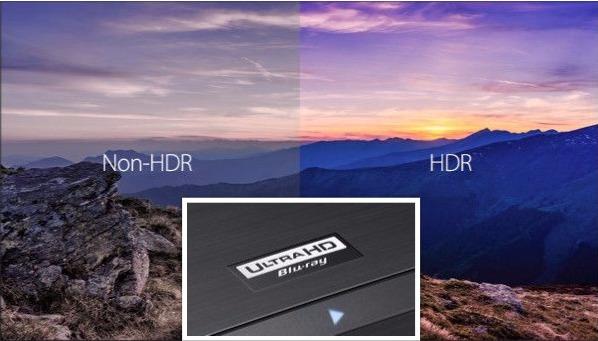In regards to A/V gear I am always an early adopter, for better and worse.
I purchased a new Samsung 4k TV with HDR capability in April 2016, along with a freshly released Samsung KS 8500 UHD player.
At the time I connected the Samsung UHD player to the TV for video and to my 2014 Yamaha Receiver for audio.
In January 2017 I purchased a 2017 model Yamaha receiver with Dolby Atmos and which could pass through the 4k signal to the TV.
After viewing my collection of UHD blurays I now can recommend that the one way to get the most out of HDR is to send the video signal straight to the TV and avoid altogether the pass through option of the receiver for video. I'm sure it is the metadata in HDR that somehow is vaguely affected by the receiver, but there is a slight degradation in HDR impact when choosing to use a receiver for the video signal pass through.
I now enjoy the best possible 4k with HDR experience that my TV is capable of displaying, while also being thrilled by upgrading to Dolby Atmos.
Every time I read a review where there is signal hesitation or "hand shake" issue between a UHD bluray player and the TV or Projector I'm sure is due to the reviewer choosing to use a high end receiver as the video pass through connection.
Always connect 4k video signal to display unit and send audio via the separate audio HDMI output on the UHD bluray player to the reciever.
By the way, if you stream 4k content with HDR to your TV, always use a direct LAN Ethernet connection to the TV. Don't use Roku or wi-fi for that matter if at all possible as I also discover there is a slight HDR degradation in the signal when using wi-fi or an intermediary Roku device. Now 4k signal will remain the same, but HDR is at is best when your stream through a hard wire Ethernet connection straight to the TV.
Can My 4-Year-Old Receiver Handle 4K, True HD?

Q I just purchased a Samsung Ultra HDTV and plan to buy an Ultra HD Blu-ray player. My current AV receiver is four years old. Is there any way I can get a 4K picture and Dolby TrueHD/DTS-HD Master Audio sound without having to buy a new receiver? —Michael Errico / via email
A It’s a sure bet that any AV receiver manufactured before 2015 will lack HDMI version 2.0a connections. Why is that an issue? Because HDMI 2.0a is required to support the high dynamic range metadata accompanying 4K/Ultra HD video programs. So, while the HDMI version 1.4 connections on your current receiver are capable of carrying both 4K video and Dolby TrueHD/DTS-HD Master Audio sound, they won’t be able to pass HDR metadata.
But don’t panic—there’s a simple way to salvage your receiver. Current Ultra HD Blu-ray player models provide dual HDMI outputs. Just connect one of these directly to an HDMI 2.0a input on your TV for video, and the second to an available HDMI input on your receiver to route audio. You’ll end up having to switch inputs on your TV going forward depending on which source you’re viewing (Ultra HD Blu-ray or satellite, cable, etc.), but the slightly more complicated setup may be worth it to avoid the hassle of buying a new receiver.
More on HDMI:
- Log in or register to post comments






























































